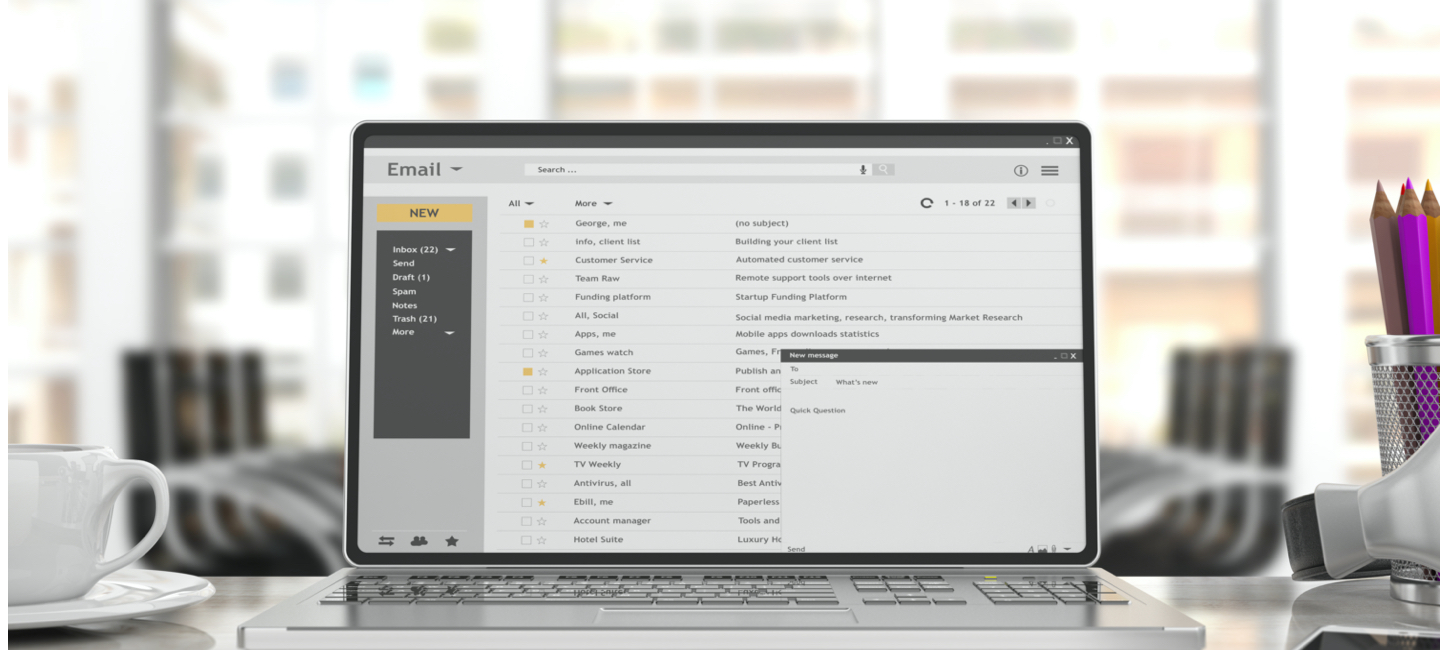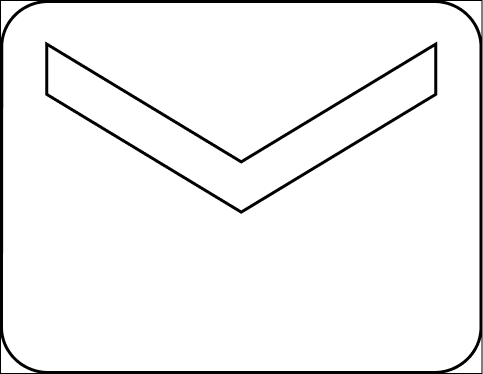Your cart is currently empty!

Mastering Small Business Email Marketing: A Comprehensive Guide to Boosting Your ROI
Reading Time: 8 minutesAuthor:
As a small business owner, you’re constantly juggling multiple responsibilities, and marketing often feels like just another ball in the air. But what if I told you there’s a marketing strategy that could yield a 4,200% return on investment? That’s right – email marketing for small businesses isn’t just alive and well; it’s thriving.
Digital marketing can get overwhelming. It happens. It’s easy to get caught up in the allure of social media and all the other fancy new things. But don’t worry. While it’s been around for a long time, email marketing remains a powerhouse for driving traffic, nurturing customers and prospects, and generating sales. But for this to happen, it’s not just about sending out a newsletter now and then; it’s about consistently sending strategic campaigns that resonate with your audience to drive real results.
In this comprehensive guide, we’ll dive into the world of small business email marketing. We’ll explore why it’s still relevant, how to implement it effectively, and the best practices that will set you apart from the competition. Whether you’re just starting out or looking to refine your existing strategy, this post will equip you with the tools and knowledge to transform your email marketing from a source of stress to your most powerful business asset.
I recently sat down with podcast host Matthew Dunn, the founder of Campaign Genius: Real-Time Email Content Made Easy, to discuss strategic marketing. The conversation covered email (of course), websites, digital tools, small businesses, big businesses, and the fun business of being in business.
Are you ready to unlock the full potential of email marketing for your small business? Let’s get started!
Why Small Business Email Marketing Is Essential for Growth
You might be wondering, “Is email marketing really worth my time?”
I get it.

With so many marketing channels available, it’s tempting to focus solely on the newest, shiniest options. But here’s the thing: email marketing isn’t just useful for small businesses – it’s essential.
Let’s talk numbers for a moment. Email marketing boasts an incredible ROI of $42 for every dollar spent. That’s a 4,200% return!
Now, I don’t know about you, but I’d be hard-pressed to find another marketing strategy that offers such a high return on investment.
But it’s not just about the money. Email marketing is a versatile tool in your small business arsenal. Here’s why:
1. Direct Communication
Nearly half the world’s population uses email, making it just as popular as social media. When you send an email, you’re not only landing directly in your customer’s inbox, you’re doing so with their permission. They might scroll past your social media posts, but they’ll at least read your email subject lines.
2. Nurturing Leads and Retaining Customers
From welcome emails to abandoned cart reminders, email marketing allows you to guide prospects through their buyer’s journey and keep existing customers engaged.
3. Building Relationships
Email marketing helps you create what I like to call “competitive insulation.” By consistently providing value to your subscribers, you’re building trust and loyalty, making it harder for competitors to lure them away.
4. Versatility
Whether you’re announcing a new product, sharing industry insights, or offering exclusive deals, email marketing adapts to your needs. For example, email automation should be part of every marketing funnel.
5. Cost-Effective
Compared to many other marketing channels, email marketing is incredibly affordable, making it ideal for small businesses with tight budgets.
Remember, you might inadvertently give your competition an edge if you’re not leveraging email marketing. Many businesses are already using email to create strong relationships with their customers. By implementing a strategic email marketing plan, you’re not just keeping up – you’re positioning your small business for sustainable growth.
How to Implement Small Business Email Best Practices (5 Steps to Success)
Now that we’ve established why email marketing is crucial for your small business let’s dive into the how. I’m going to walk you through five key steps to implement email marketing best practices that will set your campaigns up for success.
Step 1: Build Out Your Email Subscriber List
Before you can start sending emails, you need someone to send them to.
Building a quality subscriber list is the foundation of successful email marketing.
It might surprise you, but I often tell new entrepreneurs that they don’t need a website. First, they need to build their list. Once they have a list and have sold something to someone, it’s time to invest in a website.
Here are some effective ways to grow your list:
- During checkout: Ask customers to opt-in to your email list when they make a purchase.
- Confirmation page: After a purchase, offer incentives for joining your list on the order confirmation page.
- Pop-ups: While some find them annoying, well-designed pop-ups can be highly effective, with conversion rates of up to 9%.
- Email sign-up forms: Place easy-to-use sign-up fields throughout your website.</li> <li>Gated content: Offer valuable content in exchange for email addresses.
- Special discounts: Incentivize sign-ups with exclusive offers for new subscribers.
List building is so important that we wrote an in-depth post about it: How to Build an Email List Fast.
And remember, quality trumps quantity. It’s better to have a smaller list of engaged subscribers than a large list of uninterested ones.
Step 2: Plan Your Email Types
Not all emails are created equal. Your email marketing strategy should include a mix of different types of emails to keep your subscribers engaged. Consider including:
Transactional emails
Transactional emails help with customer satisfaction and retention in a variety of ways.
- Order confirmations
- Shipping notifications
- Receipts
- Password reset emails
- Abandoned cart reminders
Marketing Emails
Marketing emails include content that’s meant to build relationship equity that leads to conversions and trust,
- Welcome emails
- Newsletters
- Customer surveys
- Special offers and promotions
- Educational content

Transactional emails are a frequently missed opportunity for relationship building.
Each type of email serves a specific purpose in your overall strategy.
Transactional emails build trust and provide the necessary information, while marketing emails nurture customers and build relationship equity and loyalty.
Every business is different, so take some time to consider your audience and business procedures to determine how to maximize the impact of all your emails.
Step 3: Design Your Emails and Craft Quality Content
The design and content of your emails play a crucial role in their effectiveness. Here are some best practices:
- Consistent branding: Use your brand colors, fonts, and style consistently across all emails.
- Mobile-friendly design: With more people reading emails on mobile devices, ensure your designs are responsive.
- Compelling subject lines: Use tools like CoSchedule’s subject line tester to craft attention-grabbing subject lines.
- Valuable content: Share information that’s relevant and useful to your subscribers.
- Clear call-to-action (CTA): Every email should have a clear purpose and a prominent CTA.
Remember, your emails are an extension of your business. Make sure they reflect the quality and professionalism your customers expect.
Email Marketing: Preview text is a frequently missed opportunity. Use it to entice subscribers with a taste of what your message contains and convince them to open and read it. Share on XStep 4: Execute Your Small Business Email Strategy
With your list built, email types planned, and designs created, it’s time to implement your strategy. Here’s how to execute effectively:
Automation is Your Friend
Set up automated emails for your transactional messages. Landing pages for lead magnets should also have automation that nurtures the relationship and builds trust. Email automation is a vital part of a mid-funnel marketing strategy.
Most Email Service Providers (ESPs) offer tools to trigger these emails based on specific actions. For example, an order confirmation email is sent automatically when a purchase is completed.
Segment Your List
Don’t fall into the trap of sending the same email to everyone. Segmentation allows you to send more personalized, relevant emails. You can segment based on:
- Demographics (age, location, etc.)
- Purchase history
- Engagement level
- Interests
Remember, personalized emails perform significantly better than generic ones. Use merge tags to personalize email content.
Find the Right Frequency
Bombarding your subscribers with emails is a surefire way to increase unsubscribes. On the flip side, sending infrequently increases your chances of being forgotten. Strike a balance by:
- Testing different frequencies
- Allowing subscribers to choose their preferred frequency
- Monitoring engagement metrics to gauge response
Step 5: Monitor Email Analytics to Improve Future Campaigns
Your work isn’t done once you hit ‘send’. Monitoring your email analytics is crucial for continual improvement. Key metrics to watch include:
- Delivery Rate: Ensures your emails are reaching inboxes
- Open Rate: Indicates the effectiveness of your subject lines
- Click-Through Rate (CTR): Shows how engaging your content is
- Unsubscribe Rate: Helps identify potential issues with content or frequency
- Conversion Rate: Ultimately measures the success of your campaigns
Use these metrics to inform your future strategies. Low open rates? Test different subject lines. Poor CTR? Revisit your content and CTAs.
Email marketing is not a ‘set it and forget it’ tactic. It requires ongoing attention and optimization. But with consistent effort and application of these best practices, you’ll see your small business reap the benefits of a well-executed email marketing strategy.
Small Business Email Marketing – Conclusion
Email marketing may seem like old news compared to flashy social media campaigns or targeted ads. However, when it comes to breaking through the noise, small business email marketing is a reliable and rewarding channel if you follow best practices. It’s an efficient way to deliver value to your customers and protect your business from competition.
Let’s recap the five implementation email marketing best practices we covered in this post:
- Build out your email subscriber list: Use various tactics like checkout opt-ins, pop-ups, and gated content to grow a quality list of engaged subscribers.
- Plan your email types: To keep your audience engaged, develop a mix of transactional emails (like order confirmations) and relationship-building marketing emails (such as newsletters and special offers).
- Design your emails and craft quality content: Create visually appealing, mobile-friendly emails with compelling subject lines and valuable content that aligns with your customers’ needs.
- Execute your email marketing strategy: Leverage automation, segment your list, use personalization, and find the right sending frequency to maximize engagement.
- Monitor email analytics to improve future campaigns: Keep an eye on key metrics like open rates, click-through rates, and conversion rates to continually refine your strategy.
Effective small business email marketing isn’t about bombarding your subscribers with messages. It’s about providing value, building relationships, and strategically guiding your audience towards conversion.
By implementing these best practices, you’re not just keeping up with the competition—you’re positioning your small business for sustainable growth.
So, are you ready to harness the power of email marketing for your small business? The inbox awaits!
Do you have any questions about email marketing or how to get started? I would welcome the opportunity to chat with you. Go to VIPCHatwithJames.com to find a day and time that works for you.
Related Posts
-
Unlock Email Marketing
Use the power of email marketing for your business success.
-
How to Create a Newsletter
Email Mastery – Everything you need to know to create a newsletter that shines.
-
Email List Building
Email list building – is it worth the trouble? How to go about it and grow your list.
Author: James Hipkin
Since 2010, James Hipkin has built his clients’ businesses with digital marketing. Today, James is passionate about websites and helping the rest of us understand online marketing. His customers value his jargon-free, common-sense approach. “James explains the ins and outs of digital marketing in ways that make sense.”
Use this link to book a meeting time with James.

